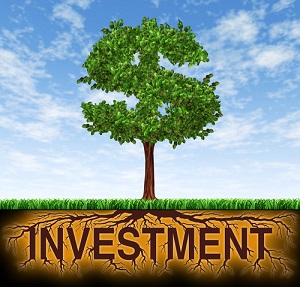The passive income of dividend investing can be just the ticket for investors who need extra cash flow.
Maybe you're saving up for a down payment on a house or a new car. Or maybe you have a big but temporary recurring expense coming your way.
 In my case, I needed a way to generate a little extra money every year to help cover my daughter's tuition at a private Catholic high school. High-yield dividend stocks solved my problem.
In my case, I needed a way to generate a little extra money every year to help cover my daughter's tuition at a private Catholic high school. High-yield dividend stocks solved my problem.
The plan is to let the dividends accumulate in my account throughout the year. When the tuition payment is due, I'll withdraw what I need to bridge the gap from what I've already saved.
Instead of having to eat into my savings, I hope to reach her graduation with more money in my investment account than I started with.
School tuition is the perfect example of how dividend investing - and in particular, high-yield dividend investing - can make a difference in your financial situation. You know that for several years, you'll need to make a large annual payment. But you also know you can't save enough to cover the total expense. And you don't want to withdraw any money from your investment account.
Dividend investing usually won't completely cover an anticipated expense, but it can make a major contribution. It all depends on how much you have to invest, how much you need, and how much risk you're willing to take.
In most ways high-yield dividend investing is like any other kind of investing, but there are some twists. Here are some tips to get the most from dividends.
Tips for High-Yield Dividend Investing
Research is the first step to finding ideal high-yield dividend stocks (with yield 5% or higher). Typically these investments carry more risk than others.
Ideally, you want to find stocks that pay the highest yields you can find, but aren't likely to see a steep price drop that will destroy your capital.
And where we're looking, the pool isn't terribly large. Fewer than 500 stocks pay a dividend of 5% or higher.
Most high-yield dividend stocks fall into one of four categories: utilities, real estate investment trusts (REITs), Master Limited Partnerships (MLPs), and Business Development Companies (BDCs).
All save the utilities are special kinds of stocks that require the payout of most, if not all, earnings in the form of dividends. That's why so many REITs, MLPs, and BDCs turn up in lists of high-yield dividend stocks.
And it typically means different tax treatment, usually favorable. But it's something to keep in mind.
Now here's a list of things to watch for when high-yield dividend investing:
- Too good to be true? You may be tempted to venture far beyond 5% into double-digit yields. But the higher the yield, the more dangerous the stock. For example, Whiting USA Trust (NYSE: WHX) has an eye-popping dividend yield of 70%. But the catch is that the company is liquidating. When WHX pays out its last dividend next March, the stock will be worth zero. Don't get lured into this trap.
- Stability matters: You don't need stocks with high growth rates, but you do want price stability. Check the stock's "beta" number, which measures volatility. A beta above 1 means the stock price is more volatile than the market. A beta of 1.5 means that stock is 50% more volatile than the market. A beta below 1 means that stock is less volatile than the market.
- Is it sustainable? Make sure the company can keep paying that high dividend. The payout ratio tells you what percentage of the company's income goes to dividend payouts. This should be below 100%. Because many high-yield stocks must pay out all their profits, it's not uncommon for their payout ratios to be near 100% or slightly over. But if the payout ratio is well over 100%, it means the company is borrowing money to pay the dividend. That can't last. Also, look at the debt. High debt means heavy interest payments. If rates rise, those payments will compete with dividends for cash flow.
- Learn from history: Check the dividend history. Has the payout been consistent? Any reduction is a bad sign, but one that gets raised regularly suggests a healthy company and more money in your pocket down the road.
- Do your homework: The usual routines - such as monitoring earnings, evaluating leadership, and watching for external factors that could help or hurt the stock - are all even more vital in high-yield dividend investing. Trouble in any of those areas could affect a company's ability to pay its dividend. And when a company's in trouble, reducing or halting the dividend is one of the first options considered.
One Pick We Like: One MLP stock recently highlighted by Dr. Kent Moors, Money Morning's Global Energy Strategist, is Plains All American Pipeline LP (NYSE: PAA). PAA provides pipeline and related services for natural gas liquids and crude oil. Plains All American Pipeline offers a yield of 5%. That means a $10,000 investment will pay you $500 a year in dividends. As an MLP, it has a payout ratio of 111.4%, within the acceptable range. And PAA has a solid dividend history. Not only has PAA paid a consistent dividend, the company has raised it for 14 consecutive years. And the beta is just 0.57, which means PAA stock is much less volatile than the market. PAA trades at about $53 a share.
More on Dividend Investing: Too few people know about this powerful dividend investing tool that can dramatically accelerate returns. And this strategy works even when a stock price stays flat. Find out how to put this money-making tool to work for you today...
Follow me on Twitter @DavidGZeiler.
About the Author
David Zeiler, Associate Editor for Money Morning at Money Map Press, has been a journalist for more than 35 years, including 18 spent at The Baltimore Sun. He has worked as a writer, editor, and page designer at different times in his career. He's interviewed a number of well-known personalities - ranging from punk rock icon Joey Ramone to Apple Inc. co-founder Steve Wozniak.
Over the course of his journalistic career, Dave has covered many diverse subjects. Since arriving at Money Morning in 2011, he has focused primarily on technology. He's an expert on both Apple and cryptocurrencies. He started writing about Apple for The Sun in the mid-1990s, and had an Apple blog on The Sun's web site from 2007-2009. Dave's been writing about Bitcoin since 2011 - long before most people had even heard of it. He even mined it for a short time.
Dave has a BA in English and Mass Communications from Loyola University Maryland.



